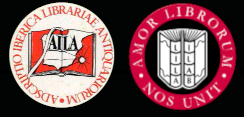


Home |
Temáticas |
Catálogos |
Pedidos |
  |  |
|||||||
|

|
RUGENDAS. (Johann Moritz) HABITANTE DE GOYAS, QUADRO A ÓLEO PINTADO SOBRE MADEIRA. |
|
|
Clique nas imagens para aumentar. MANUSCRITO, SÉC. XVII - MANUSCRIPT, 17TH CENTURY. FINE OF LANDS BETWEEN PROBERT & WILLIAM. [LONDON - ENGLAND]Documento redigido em 4 de Outubro de 1642. (pode ler-se no documento:«quato de Octobris Anno regno[rum] Caroli dei gra[tia] Angli […]conqu[estu] decimo septimo coram» que se entende como o décimo sétimo ano do reinado de Charles I.) Manuscrito de 12x43,5 cm. Com uma folha de pergaminho escrita por mão firme, com letra cursiva em tinta castanha, ao longo de 6 linhas na frente e com assinaturas no verso. Com pequenas manchas de oxidação. A tinta de algumas partes está muito desvanecida, o que dificulta a leitura. Na quinta linha do documento encontra-se uma parte rasurada pela mão do escriba, com 3 cruzes, numa parte onde se lê: «hered[ibus] ipius ( x x x ) Henrici». Este documento trata-se de uma fine of lands. O autor do processo foi Watkins Probert. Os réus foram Henry William e Mary William, sua esposa. Os autores pagaram aos réus quarenta libras esterlinas. A fine of lands ou final concord era uma espécie de falso procedimento legal que tinha o efeito de transmitir propriedade de uma parte a outra, a troco de uma soma monetária, não se tratando, contudo, de um contrato de compra e venda ou arrendamento. Existiu em Inglaterra desde o século XII até à sua abolição em 1833. O processo dava-se, normalmente, no Court of the Common Pleas criado no final do século XII, instalou-se em Westminster Hall até à sua extinção em 1880. Este tribunal teria jurisdição sobre todos os assuntos de transferência de propriedade, em exclusivo entre particulares, sobretudo quando existia falta de relevância para o Rei (Coroa). Terá sido o órgão mais relevante para a jurisprudência medieval, embora não tenha sido o mais alto dos tribunais de common law. Nestes processos, o autor (em inglês plaintiff) interpunha uma ação em tribunal para recuperar as terras do réu (em inglês deforciant), alegando que elas eram suas. O réu, por sua vez, simplesmente concordava com a alegação. O autor acordava então em pagar-lhe uma soma de dinheiro pelo acordo, passando a propriedade para o nome do primeiro. Na prática, o que realmente acontecia era que o autor estava prestes a comprar o terreno ao réu, atual proprietário, havendo ambas as partes acordado previamente nesta transação. Uma vez que não se tratava de um contrato legal de transferência de propriedade, esta era descrita de forma extremamente vaga. O dinheiro pago pelo acordo é frequentemente uma aproximação do valor real da propriedade. O documento era escrito em triplicado numa folha de pergaminho grande, que era depois cortada em linhas onduladas, com a palavra latina chirographum (ocasionalmente substituída por algum outro termo) escrita ao longo do local onde as linhas deviam ser cortadas. Cada parte do acordo retinha uma cópia, que se tornava na escritura de propriedade do terreno do comprador, sendo a terceira (foot of fine) arquivada pelo tribunal como registo do procedimento. Este foi um processo utilizado durante séculos como garantia de autenticidade. Transcrição de algumas linhas do documento: [linha 1] Hec est finalis concordia fca- in Cur[ia] d[o]m[ini] Regis magne Cessionis sue [...] apud […] in [...] p[re]d[ict]o [...] quato de Octobris Anno regno[rum] Caroli dei gra[tia] Angli […] Franc- & […] Regis fidei
Manuscript. 12x43.5 cm. With a sheet of parchment written by a firm hand, in cursive handwriting in brown ink, along 6 lines on the front and with signatures on the back. With small oxidation stains. The ink on some parts is very faded, which makes reading difficult. On the fifth line of the document there is a part erased by the scribe"s hand, with 3 crosses, in a part where it reads: «hered[ibus] ipius ( x x x ) Henrici». This document is a fine of lands. The plaintiff in the case was Watkins Probert. The deforciants were Henry William and Mary William, his wife. The plaintiffs paid the deforciants forty pounds sterling. The fine of lands or final concord was a kind of false legal procedure that had the effect of transferring property from one party to another in exchange for a monetary sum, although it was not a contract of sale or lease. It existed in England from the 12th century until its abolition in 1833. The process usually took place in the Court of the Common Pleas created at the end of the 12th century, housed in Westminster Hall until its extinction in 1880. This court had jurisdiction over all property transfer matters, exclusively between private individuals, especially when there was a lack of relevance to the Crown. It may have been the most important body in medieval jurisprudence, although it was not the highest of the courts of common law. In these proceedings, the plaintiff filed a lawsuit to recover the lands of the deforciant claiming that they were his. The deforciant, for his part, simply agreed with the claim. The plaintiff then agreed to pay him a sum of money for the agreement, passing the property on to the plaintiff. In practice, what actually happened was that the plaintiff was about to buy the land from the deforciant, the current owner, and both parties had previously agreed to this transaction. Since this was not a legal contract for the transfer of ownership, it was described extremely vaguely. The money paid for the agreement is often an approximation of the real value of the property. The document was written in triplicate on a large sheet of parchment, which was then cut into wavy lines, with the Latin word chirographum (occasionally replaced by some other term) written along the place where the lines were to be cut. Each party to the agreement retained a copy, which became the title deed to the buyer"s land, the third (foot of fine) being filed by the court as a record of the proceedings. This was a process used for centuries as a guarantee of authenticity. Referência: 2302SB001
Local: Gravureiro Gav. 3-08 Caixa de sugestões A sua opinião é importante para nós. Se encontrou um preço incorrecto, um erro ou um problema técnico nesta página, por favor avise-nos. 
|
Pesquisa Simples




|
||
 |
|||
|